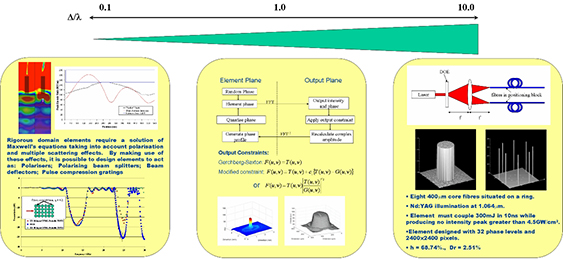Optical Information Processing
Diffractive Optical Elements : Beam Shaping and Interconnection
(click for larger image)
Optically Interconnected Computing
High bandwidth and connectivity available in optics allows for highly parallel and scalable computer architectures to be designed. Examples are the optical highway (below) and neural networks.
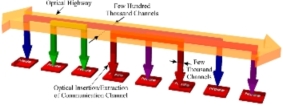
Design of highly parallel and flexible systems can be achieved using reconfigurable FPGA technologies coupled with high speed optoelectronic devices such as VCSELs, modulators and photodiodes.
The example (below) is one hundred transceivers and associated logic that could be placed on an industry standard FPGA chip.
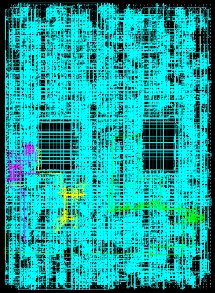
Rapid prototyping can be used to design the modular optomechanical structures required to support the optics, quickly and cheaply, before a final design is considered for final construction.
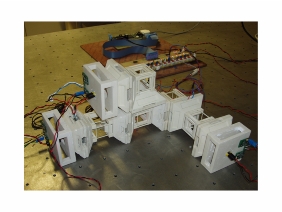
Flip-chip bonding is used to attach the silicon processing elements, optoelectronics and supporting passive devices on to a transparent multi-chip module.
In this case the optical path is into the transparent substrate leaving the top surfaces of all the chips available for cooling.
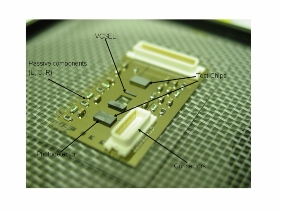
Quantum Key Distribution
| "A Route To Absolutely Secure Encryption" | ||
 |
Quantum Key Distribution (QKD, also known as quantum cryptography) allows two partners to share a verifiably secure encryption key, guaranteed by the laws of quantum mechanics. |  |
Our system:
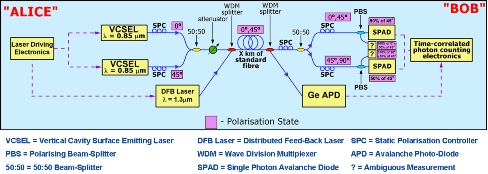

In our experiments we use an implementation of the two–state B92 protocol. The binary values "0" and "1" are encoded using two non–orthogonal linear polarisation states separated by an angle of 45°. In this case the Heisenberg's Uncertainty Principle states that the measurement of one property necessarily affects the other. Hence, if the communication channel is tapped by an eavesdropper (Eve), changes in the polarisation states will create an increase in the error that the transmitter (Alice) and receiver (Bob) can quantify.


